Gazillionaires Gone Wild on the Gram!
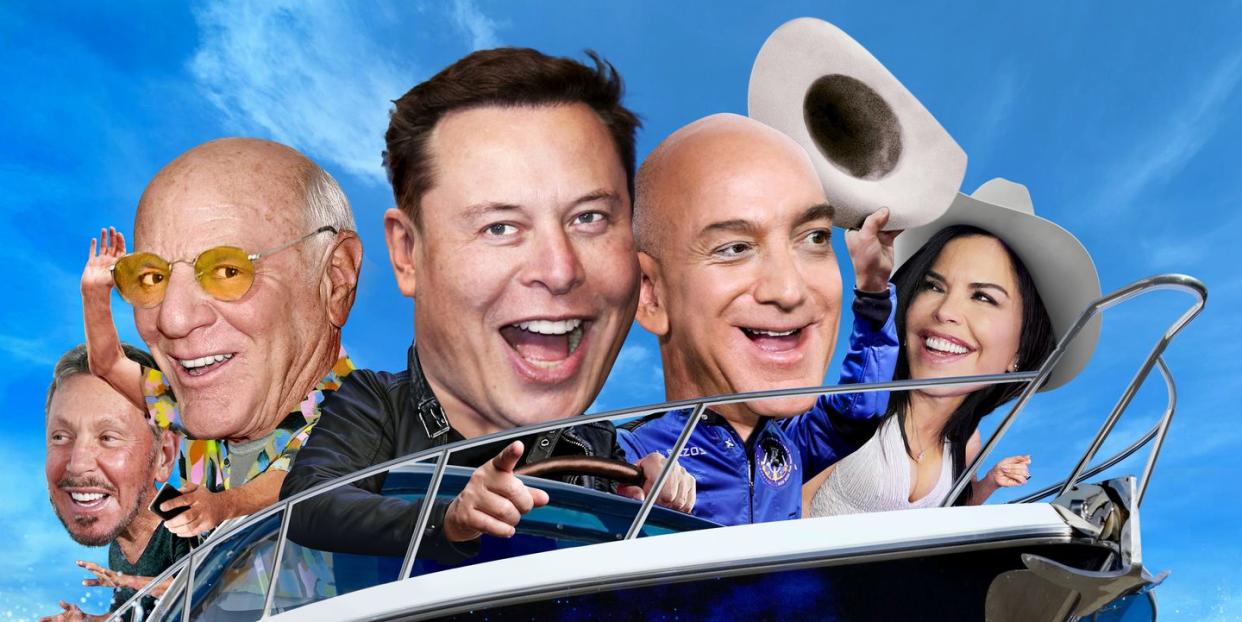
"Hearst Magazines and Yahoo may earn commission or revenue on some items through the links below."
Kurt Vonnegut and Joseph Heller once attended a swanky party on Shelter Island at the home of a billionaire neighbor of their friend John Bogle, the index fund pioneer and philanthropist. At one point, Bogle later recalled in a collection of essays, Vonnegut informed Heller that their host, a hedge fund manager, made more money in one day than Heller ever earned for Catch-22.
“Yes,” Heller replied. “But I have something he will never have: enough.”
Bogle’s anecdote was recounted as career advice for budding billionaires to: play by the rules, give back, and curb their bottomless lust for more. Today it’s an apt marker of a generational shift among the elite, from the Bogles of the world to the Elon Musks, who are as venal as Prince Charles accepting a bag of cash from a Qatari sheikh, or your average TikTok influencer thirsty for the acclaim of the metaverse. In the new pecking order, it’s not enough to be rich. If you’ve got a fortune, you must flaunt it. The state of affairs is an inversion of the old Methodist adage about doing all the good that you can in the world, except now it’s about flexing as loudly as possible—in all the ways you can, in all the places you can, for as long as you can. At a time when every Tom, Dick, and Barry can post on main from his Lürssen while idling on the Bosporus, or pontificate on Clubhouse from his Gulfstream on the way to Sun Valley, the mega-asset class has come down with a mean case of billionaire braggadocio.
“Today’s money is indeed shiny, brash, and vulgar,” says Jill Spalding, author of Luxury: A History. “But so was Andrew Carnegie’s until he cleaned it up through his foundation.”
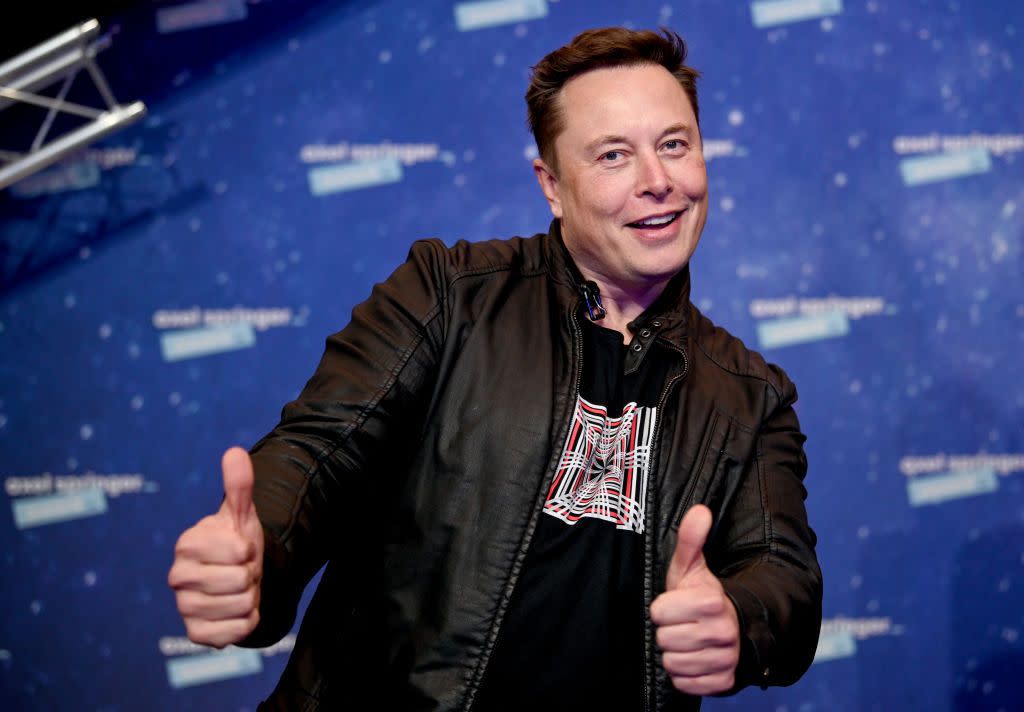
The vieux riche may bemoan the passing of “stealth wealth”—an oxymoron if ever there was one—but the battle between the establishment and the arrivistes is a timeless conflict that got its most recent dramatization in the HBO series The Gilded Age. Its hero, George Russell, is modeled on Carnegie and turn-of-the-century robber barons like the railroad tycoon Jay Gould, who in his day was mocked by the likes of Cornelius Vanderbilt. With more billionaires around today—their ranks exploded by 30 percent during the pandemic, and 86 percent of them are richer than they were before—it’s inevitable that their hijinks would come into sharp relief, especially with the less discreet ones trolling for likes.
“A key difference is social media, which puts it all out there like so much dirty laundry,” Spalding says. “At least to those of us holding on to old-fashioned ideals.”
These platforms offer a historically unprecedented, instantaneous window into the lives of the ultrawealthy, but the censure they can trigger can grow as quickly as a newly minted tech fortune. And with good reason. While the follies of the upper crust have long been a spectator sport for the less privileged, at least the confounding extravagance of Carnegie et al. suggested an appreciation for and engagement with the world. In comparison, some of today’s status-conscious billionaires seem less concerned with connoisseurship or patronage.
The leader of this modern league of extraordinarily loaded gentlemen is Musk, who not only entered a wasteful space race against Richard Branson and fellow divorcé Jeff Bezos but defied ordinary mogul logic when he went after Twitter in April for $44 billion, one of the largest leveraged buyouts of a publicly listed company.
Like Rupert Murdoch, who, desperately seeking relevance in 2005, bought Myspace and quickly ruined the once thriving online community, Musk saw hundreds of thousands of Twitter users quit the social media platform only to announce in July that he was pulling out of the deal. Still, he has a cult leader’s hold over his followers. After the news broke that he had fathered twins with a female executive at one of his companies while married to the musician Grimes, with whom he also had a secret child, the father of nine gleefully tweeted, “Doing my best to help the underpopulation crisis.”
The other card-carrying members of the billionaire braggart’s club include Oracle co-founder Larry Ellison, who continues to use his spare change to buy large parts of Malibu. You’d think his 117,000 Twitter followers would clap back in his replies, but they include fellow tech colossi Michael Dell (676,000 followers) and Uber’s Travis Kalanick (226,000), after all. Bezos bests them all with some 4.9 million followers on Twitter, but it was on Instagram that he made headlines in July, slipping into Drake’s comments on Instagram with the not so subtle humblebrag, “Started from the bottom now we’re here.”
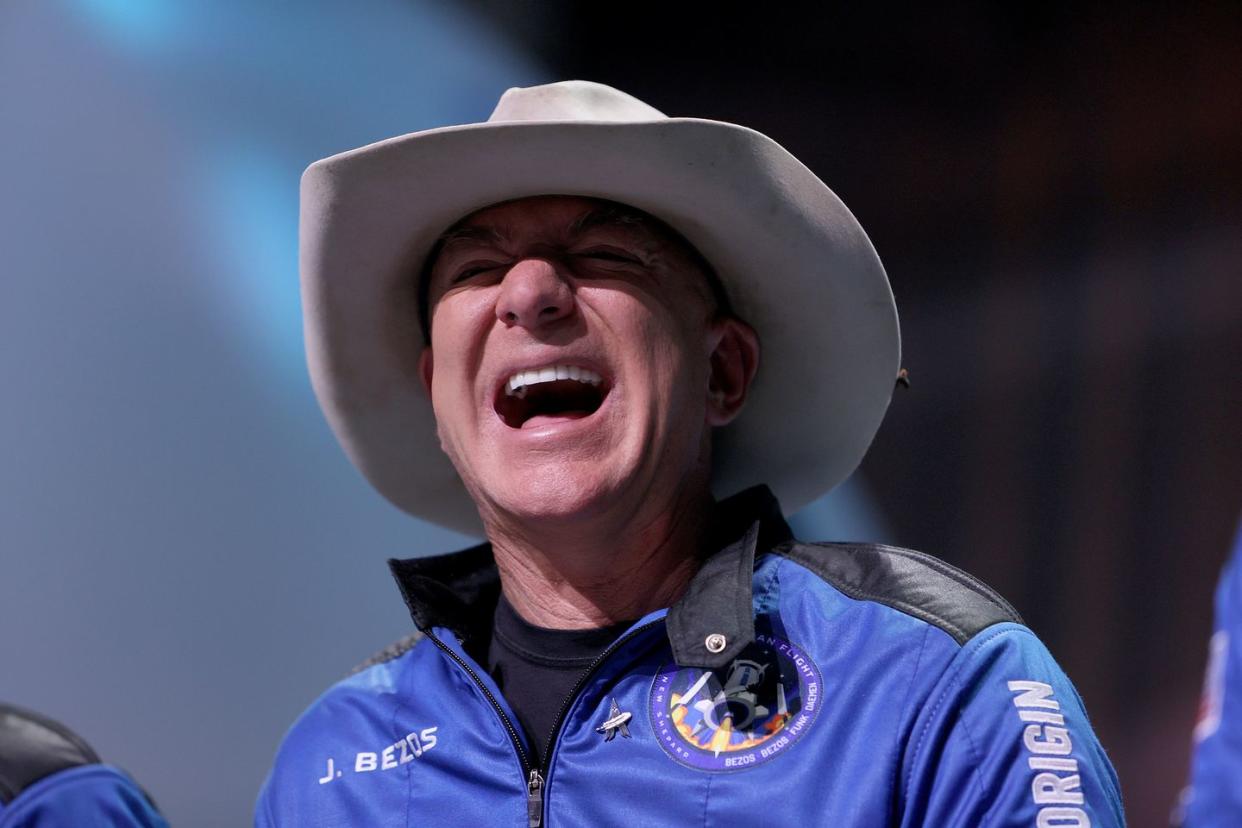
Mark Zuckerberg, whose Meta owns Instagram, is not the least bit embarrassed to share Reels of himself wakeboarding for his 10 million followers. Sometimes the oversharing backfires, as when David Geffen Instagrammed in the early days of the pandemic that he was “avoiding the virus” in the Grenadines aboard his yacht. Perhaps he should have followed the example of pal Barry Diller, who comes across as a cuddly grandpa when he posts candids from his schooner.
Then there’s the Texan hedge fund manager Bill Perkins, who set a record in May at Christie’s when he paid $15.3 million for The Sugar Shack, a work by the late African-American painter Ernie Barnes most famous for its appearance on the end credits of TV’s Good Times. For a work that was originally estimated to fetch between $150,000 and $200,000, he brought down the hammer after 10 minutes of bidding.
“A childhood dream come true,” the 53-year-old Instagrammed, adding #LuckyAF, seemingly unbothered by the exorbitant premium. With 294,000 followers on Instagram, he has upped the ante for his peers by routinely sharing his high-stakes misadventures with the trustafarian turned poker and social media star Dan Bilzerian, who has 33 million followers on the app, more than Madonna.
It’s easy to understand why these tech robber barons would take to social to move markets and shape the political agenda of the day. At a time of record income disparity and wholesale market volatility, it’s harder to compute why they’d be inclined to peacock like influencers at Pitti Uomo. At Allen & Company’s annual conference in Idaho this summer, the three comma club ditched the dad jeans, software convention polos, and discreet luxury of Brunello Cucinelli for showier duds, throwing on Dior (Barry Diller), Moncler (venture capitalist Aviv Nevo), and Stone Island, rappers’ favorite small Italian label (movie producer Brian Grazer). Contrast Jack Dorsey’s regular appearances during Paris Fashion Week (at Rick Owens during the women’s shows last September and at Louis Vuitton’s men’s in June) to Berkshire Hathaway honcho Warren Buffett, who yet again upcycled an old short-sleeve button-up crawling with a lizard print at the proceedings in Wood River Valley. Not for him the wardrobe of the modish hypebeast.
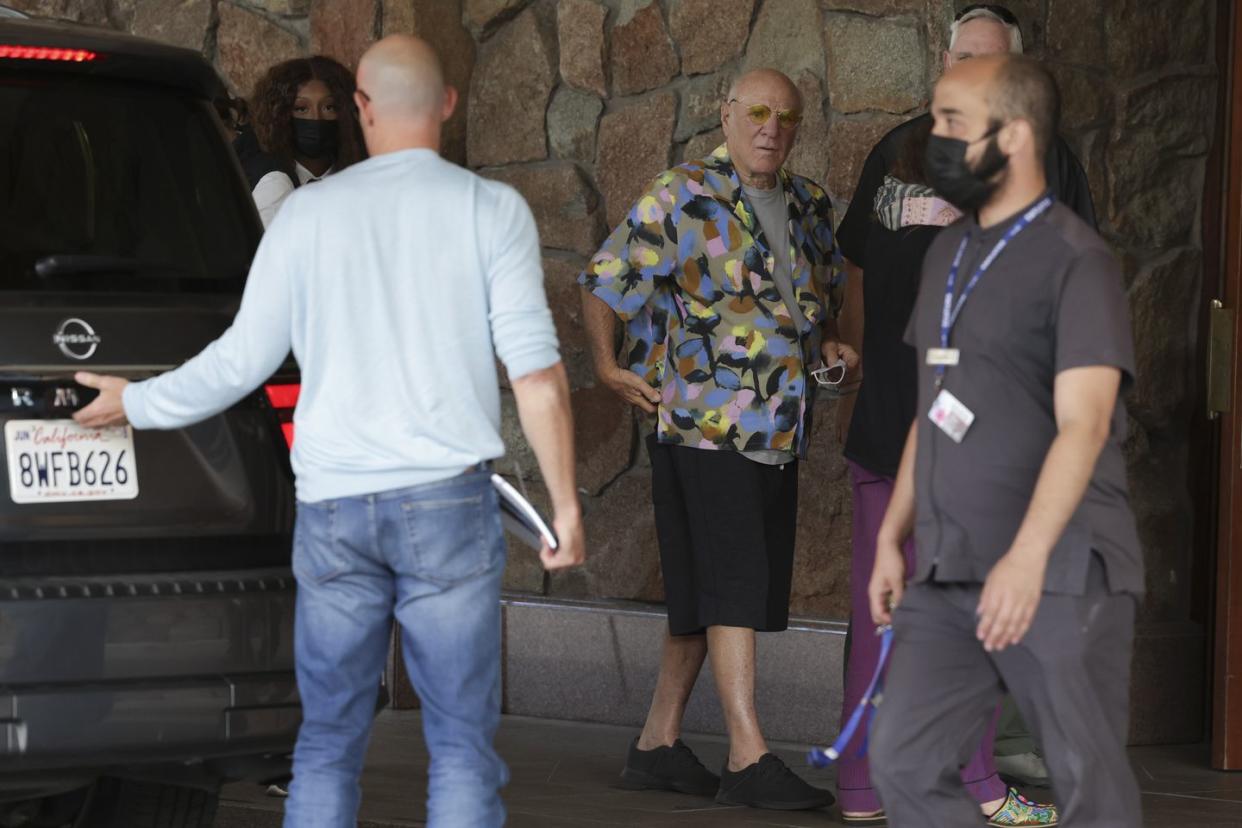
Buffett, as a matter of fact, is the standard bearer for the low-key arm of today’s ruling class. In May he and Bill and Melinda Gates gathered the 200-strong members of the Giving Pledge network for their annual convention, a drum circle in Ojai, California, so quiet its sounds can be heard only by those with a net worth in excess of $1 billion. Attendees did not pose for paparazzi when getting off their jets nor did they story their fire fits. This was Bohemian Grove for do-gooders. They were adhering to the oldest establishment precept of all: discretion. If you must appear in the newspaper, the Main Line thinking went, stick to the milestones: birth, marriage, and death.
They seem to have heeded the lessons of the past, unlike many of today’s masters of the universe, who are going for Ceaușescu levels of mindless ostentation. They would be well advised to hit the history books for a warning, and they wouldn’t even have to go back too far. It was in 1999 that Musk, newly flush after selling his startup Zip2 to computer giant Compaq, showed off a new toy on CNN, a McLaren F1 worth $1 million.
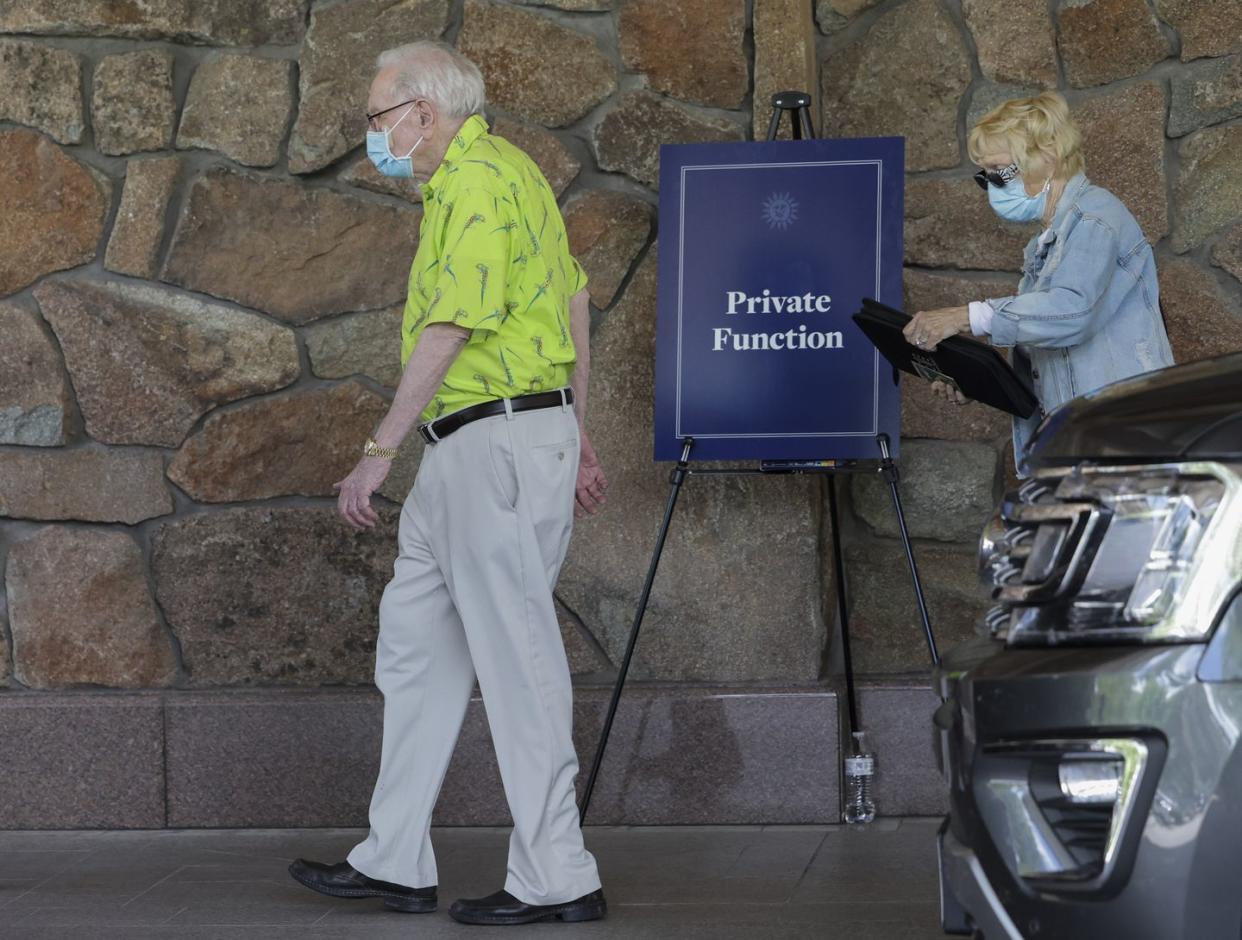
The young dynamo, sporting his former teeth and hairline, clearly relished his newfound “creature comforts” while smugly recalling his miserly days. His then fiancée, Justine Wilson, later the author of the fantasy novel BloodAngel, appeared apprehensive. “It’s decadent,” she said. “I just worry that we will become spoiled brats and lose a sense of appreciation and perspective.”
If only Musk had paid attention to his ex, or at least stuck to buying supercars. Twitter’s stock slid following his July withdrawal, and the company sued to force him to honor the deal. Musk lost his bid to delay the trial, and the two parties are expected to face off in October.
Even if the company prevails, nothing in his past suggests that he has the chops or the self-control to make a go of it despite himself, or to rein in his impulse buying. His likely rolling back of moderation policies might please free-speech maximalists, but it doesn’t augur well for the rest of us. Nor does the old McLaren. Encouraged to do something reckless by his billionaire pal Peter Thiel not long after the CNN segment, Musk totaled the car in an accident.
This story appears in the September 2022 issue of Town & Country. SUBSCRIBE NOW
You Might Also Like
